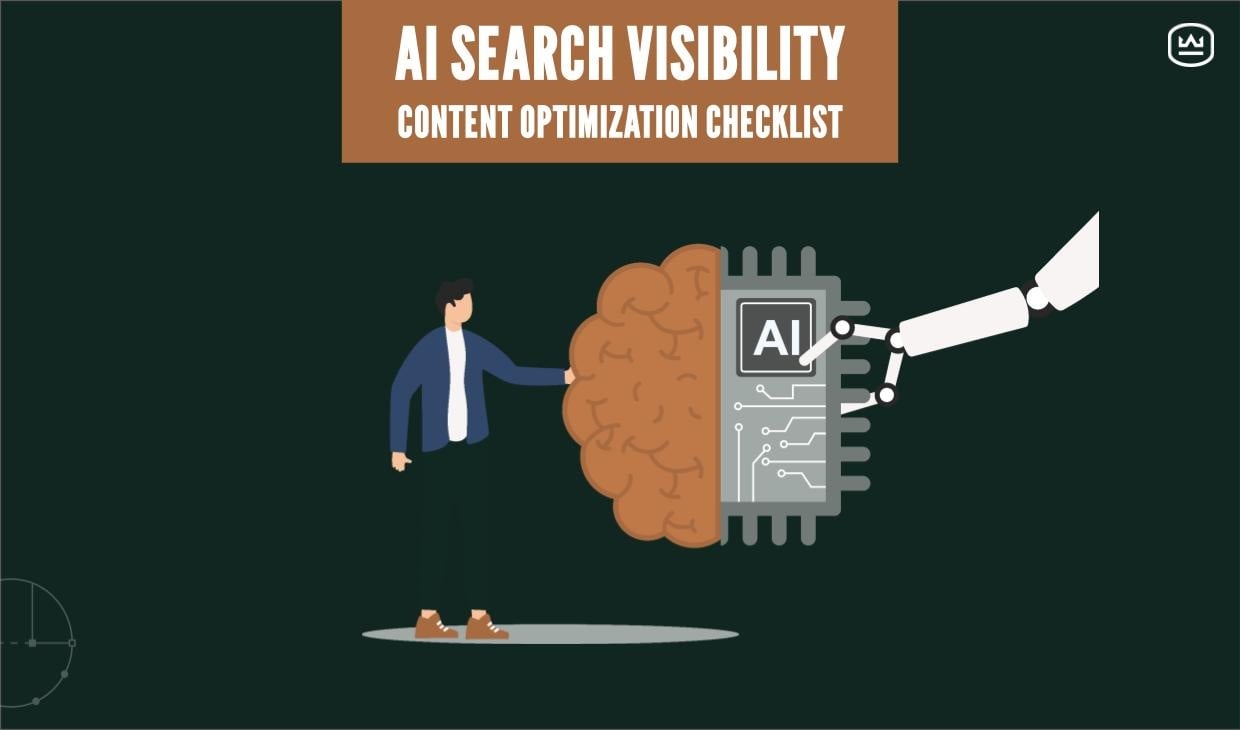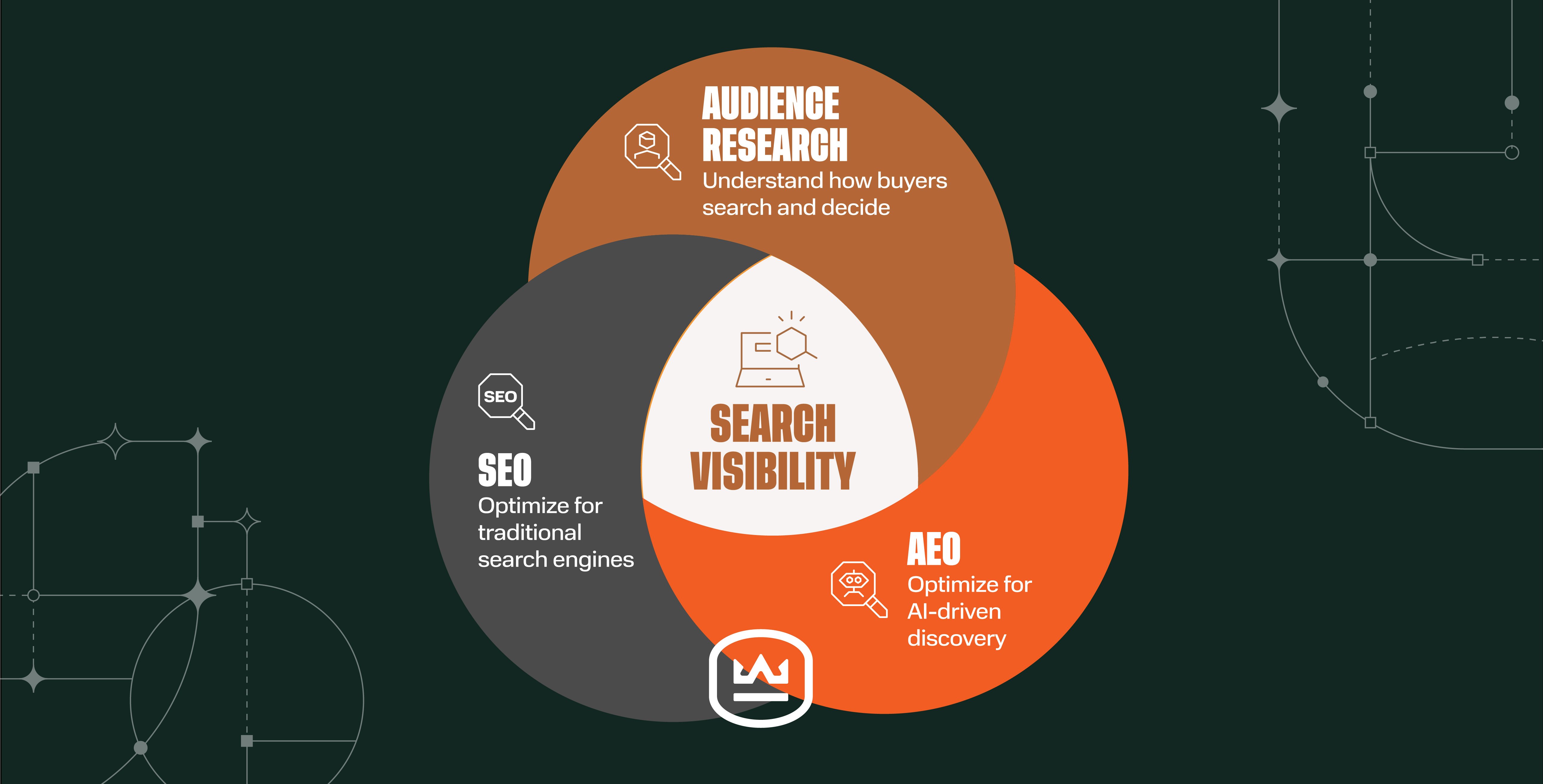What Really Happens When You Automate B2B Sales?
Written by
Imagine a future where B2B salespeople spend most of their time actually selling — because they get to spend less time messing around with sticky notes, spreadsheets, and follow-up emails.
Now, open your eyes — because that future is already here. Sales automation capabilities in CRMs like HubSpot make it possible to bring new levels of efficiency and productivity to sales teams, right now.
In a recent episode of The ChangeOver podcast, Greg Linnemanstons and I discussed in detail how outdated tools and traditional sales processes are falling short, and how implementing sales automation tools can not only streamline sales operations, but also empower sales teams to focus on what they do best: building relationships and closing deals.
Whether you lead a team of sales professionals or you’re a team of one handling highly considered purchases on long sales cycles, our discussion will arm you with insights to stay ahead as B2B sales keeps evolving.
What Can Sales Automation Actually Do?
Inefficiency has long been a thorn in the side of many organizations that depend on B2B sales. Outdated, manual methods of tracking leads, nurturing prospects, and following up on deals can be incredibly labor-intensive and time-consuming. These inefficiencies lead to frustration among sales teams and, ultimately, missed revenue opportunities.
In our conversation, Greg and I explored how the right sales automation tools — when implemented correctly — can drastically improve lead management, deal progression, and overall sales performance. Here’s what you need to know about why sales automation is a must-have for industrial organizations today.
The Problem: Too Much Admin, Not Enough Selling
The traditional sales process is filled with repetitive administrative tasks that pull salespeople away from selling. Entering data into a CRM system, managing email follow-ups, sorting through pipelines, and sifting through opportunities are tasks that eat away at the time sales reps should be spending in front of customers.
From my own experience managing sales teams, I’ve seen how the right tools can change this dynamic.
A CRM system that automates lead assignments, tracks touchpoints, and provides visibility into pipeline stages allows salespeople to focus on what really matters — developing customer relationships and closing deals.
As I shared on the podcast, the goal is to make people’s workday more enjoyable and more productive by minimizing the mundane tasks and freeing up sales teams to spend more time in meaningful customer interactions.
The Solution: Streamlining Lead Management and Pipeline Efficiency
One of the key areas where automation shines is in lead management. Without a system to efficiently manage and nurture incoming leads, sales teams can easily miss opportunities, leaving potentially valuable leads to slip through the cracks.
Consider the benefits of automating lead management:
- Faster lead assignment: Automation assigns leads immediately, ensuring fast follow-up within critical windows
- Reduced need for manual entry: Sales teams no longer waste time manually entering data into CRMs when automation tools can do data entry for them
- Prioritized outreach: Automated systems can help prioritize high-value leads, ensuring sales’ focus is on the most promising prospects
Without the efficiencies of sales automation systems, companies relying on manual processes risk letting leads sit idle for too long, reducing the chances of conversion and increasing the risk of loss to a competitor that’s able to respond faster.
Overcoming Stalled Deals with Automation
Another pain point for many sales teams is the problem of stalled deals. Deals often get stuck in the pipeline for various reasons — maybe a prospect goes silent, or there’s no clear next step for moving the deal forward.
With sales automation, organizations can create structured pipelines with defined checklists and criteria for advancing opportunities. This not only ensures smoother deal progression but also reduces the chances of deals stalling indefinitely and dropping off the radar.
We identified several areas where sales automation can help unstick deals:
- Automated reminders and tasks: Sales teams receive reminders to follow up at critical stages
- Structured pipelines: Clearly defined stages with specific actions required to move deals forward
- Custom checklists: Checklists guide sales reps through each pipeline stage, ensuring consistently applied standards across teams
With these tools in place, sales reps stay on top of deals, and managers can see where bottlenecks occur, improving overall pipeline health.

Adoption is Key—But Beware of Common Pitfalls
Adopting sales automation isn’t simply a matter of installing software and hoping for the best. Greg and I talked at length about the challenges many organizations face with CRM and automation tools.
One of the biggest mistakes I’ve seen companies make is assuming that simply buying and installing a CRM will solve all their sales-related problems. That tends to lead to these common pitfalls in adoption:
- Lack of training: Without training, sales teams aren’t able to fully adopt the tools
- Poor customization: Automation systems need to be tailored to your specific sales processes
- Neglecting change management: Successful adoption requires guiding teams through changes in workflow and habits, and establishing accountability for making the changes
Without addressing these challenges, even the most advanced automation tools can’t be expected to deliver optimal results.
The Human Element: Automation Can Empower Sales Teams
At the heart of sales automation is a simple truth: automation is not about replacing human salespeople. It’s about getting busywork out of the way.
By automating the mundane, repetitive tasks, sales teams can focus their energy on what truly drives business success — engaging with customers, understanding their needs, and providing the right solutions.
Giving sales teams the right tools to manage their workloads effectively can have a tremendous impact on employee satisfaction, too. In my experience, companies that invest in the right resources and training see higher closing rates — and they also get happier sales teams.
Looking Ahead: AI and the Future of Sales Automation
In the next episode of The ChangeOver, we take this conversation a step further by exploring how artificial intelligence (AI) is transforming sales automation even more. From AI-powered chatbots chatbots and email copilots to predictive lead scoring and pipeline forecasts, these tools are helping sales teams boost their effectiveness in ways we couldn’t have imagined just a few years ago.
Be sure to subscribe to The ChangeOver Podcast so you don’t miss it.
Ready to Take Your Sales Process to the Next Level?
Sales automation isn’t “future talk” anymore — it’s a necessity for B2B organizations to stay competitive. Whether you’re struggling with lead management, stalled deals, or just need to give your sales team more time to focus on selling, strategic use of automation can help you achieve your goals. We can help you get started on optimizing your sales processes and training your teams to use the tools at their disposal to close more deals. Reach out to us and set up a time to talk.
Subscribe To Our Blog
Information. Insights. Ideas. Get notified every time a new Weidert Group blog article is published – subscribe now!
You May Also Like...

Search Engine Optimization
How Falcon Rebuilt Industrial AI Search Visibility in 2025

Search Engine Optimization
The New Search Visibility Checklist for AI-Era Content Marketing

Search Engine Optimization
SEO Isn’t Dead. It’s Evolving: How B2Bs Can Stay Visible in the Age of AI
Accelerate Your Growth with
Weidert Group
If you’re ready to explore a partnership, request a personalized consultation with our team.

